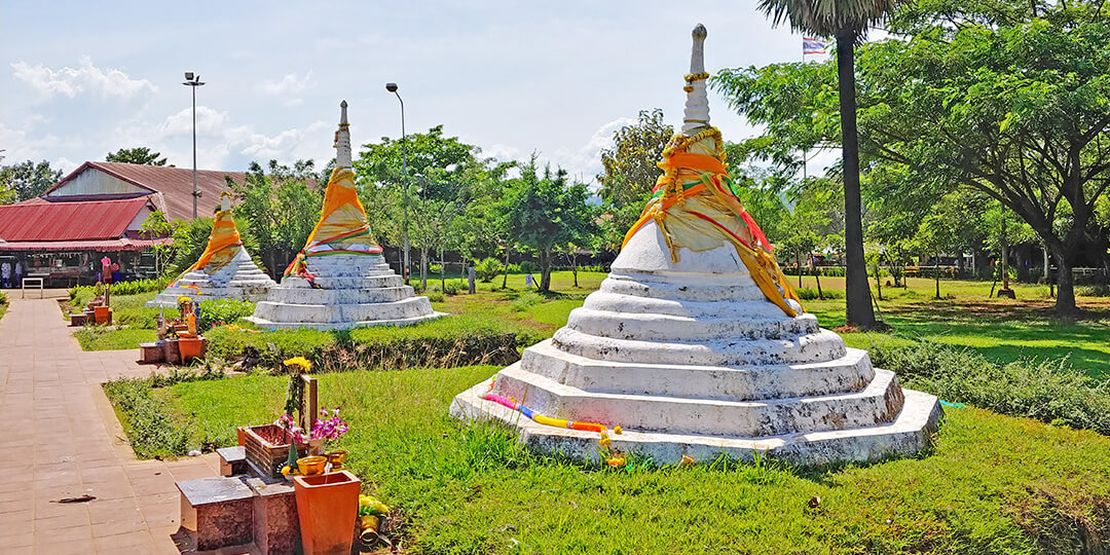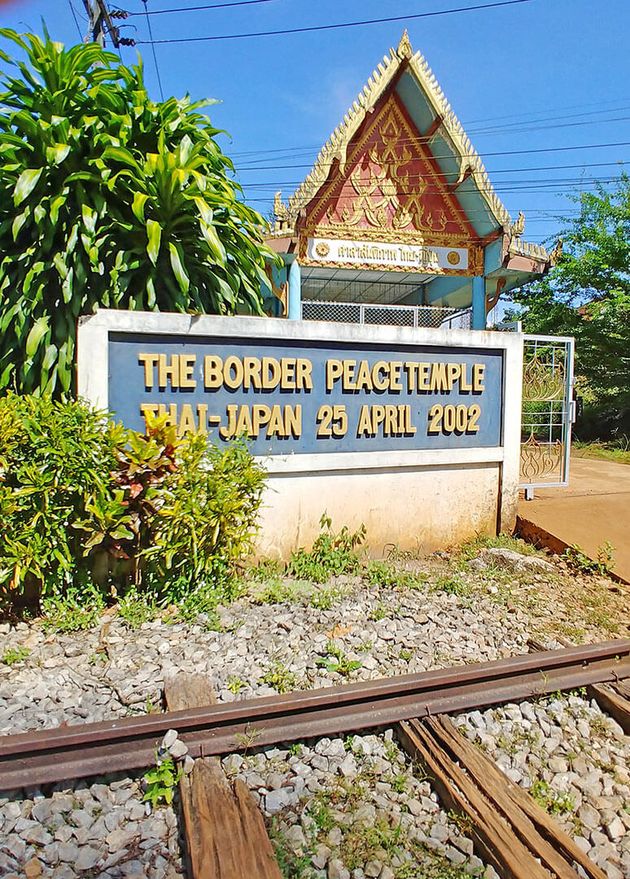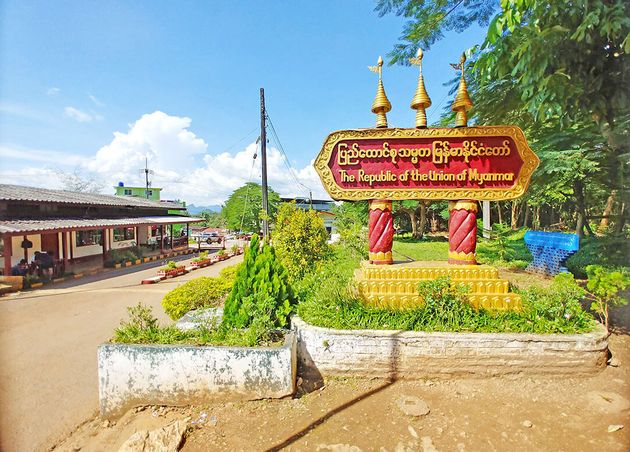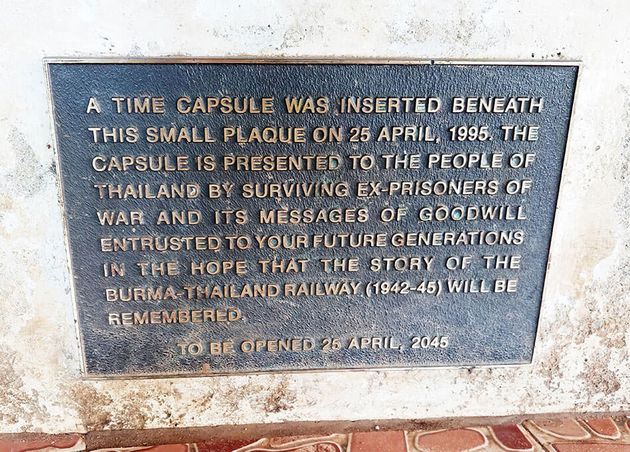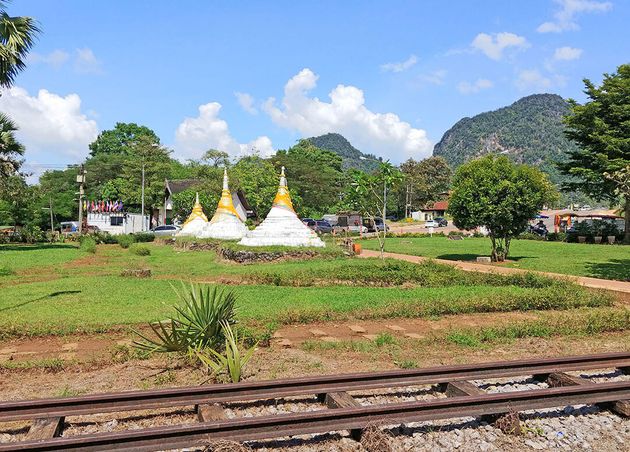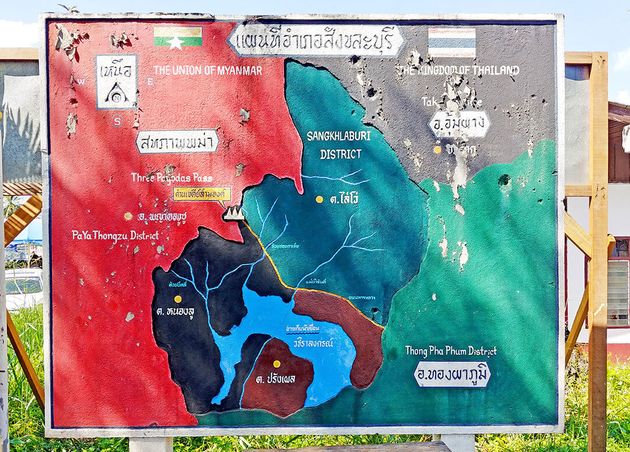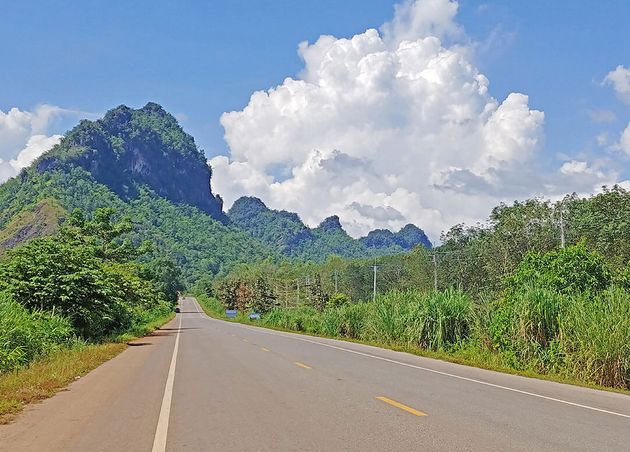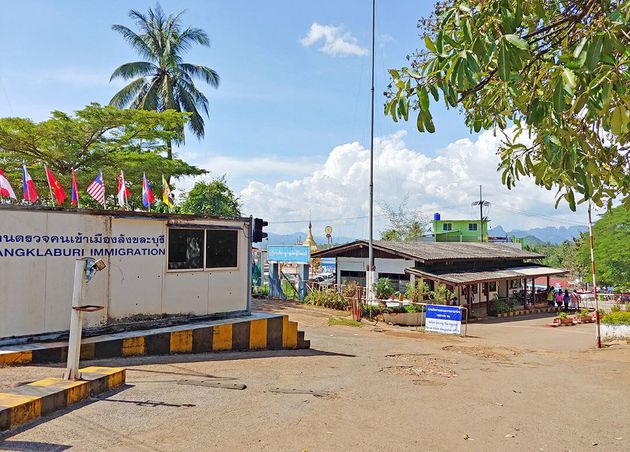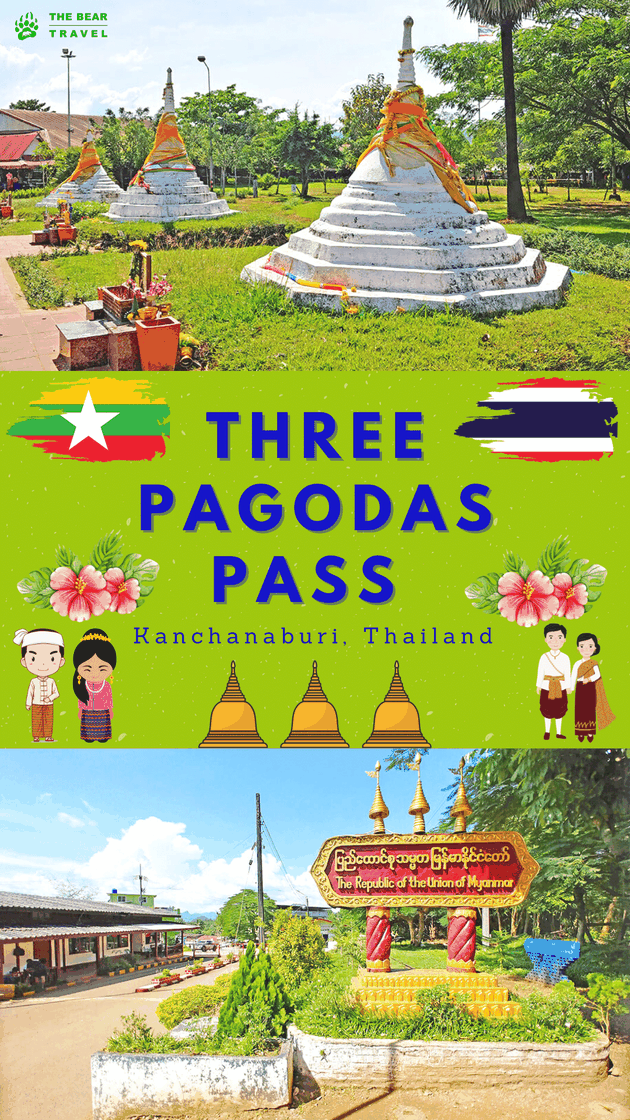Three Pagodas Pass: A Symbol of Peace in Kanchanaburi
Kanchanaburi has a rich history and many gorgeous historical places to visit. It is a great place for those looking for a quick trip to escape the concrete walls of Krung Thep Maha Nakhon (Bangkok) and be among nature, go hiking and swim in beautiful waterfalls, and learn more about historic Kanchanaburi City.
Three Pagodas Pass is one of the most important places to visit in this part of Thailand. Located in Nong Lu Sub-district, it is 215 kilometers far away from Kanchanaburi Province. Three stupas are standing at the pass with octagon-shaped bases, while the upper part is round and has a sharp top with a white color. In the past, it was only the pile of stones that people worshiped for a fortune before passing to Myanmar.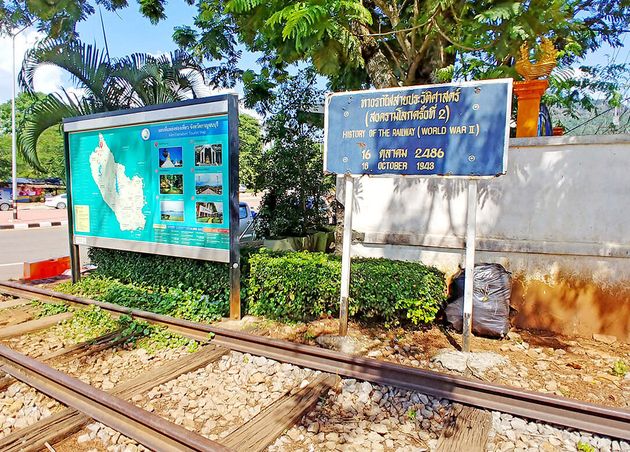
If you’re hoping to visit Kanchanaburi in Thailand, we highly recommend checking out the Three Pagodas Pass, one of the most stunning historical landmarks. Or join us here as we take a tour of this area that has seen so much of history passing through.
The Three Pagodas Pass is named after three small, crumbling stupas or chedis, probably built at the end of the Ayutthaya period, as a symbol of peace.
Three Pagodas: A Symbol of Peace
Three Pagodas Pass is located in the Tenasserim Hillson, the border between Thailand and Myanmar (Burma), at 282 meters (925 feet). The Pass links the town of Sangkhlaburi, north of Kanchanaburi Province, Thailand, to Payathonzu, south of Kayin State, Myanmar.
The Pass is named after three small, crumbling stupas or chedis, probably built at the end of the Ayutthaya period as a symbol of peace. They are now on the Thai side of the border. However, parts of the border are still disputed. These three chedis appear in the provincial seal of Kanchanaburi Province in stylized form. The Pass gives its name to the Three Pagodas Fault.
It has been the main land route into Western Thailand since ancient times. It is believed to be the point at which Buddhist teachings reached the country from India in the 3rd century.
A Short Brief from Thai History
In Thai History (14th–18th centuries), the Burmese used the pass as their main invasion route during the Ayutthaya period. But at times, it was also used against them by Siamese armies. The first Burmese invasion through the pass occurred in 1548 during the Burmese–Siamese War (1547–1549).
During World War II, Japan built the infamous Death Railway (officially Taimen – Rensetsu Testudo) through the pass. There is a memorial to commemorate the thousands of Australian prisoners of war who (with other Allied prisoners and Asian civilians) died as forced laborers in the construction of the railway.
The region is home to several hill tribes, including Karens and Mons. They are unable or unwilling to obtain citizenship from either country. Separatist armies had repeatedly tried to seize the pass from Myanmar, with the Mons in effective control until 1990, when Burmese troops regained it.
Three Pagodas Pass is located in the historical area, the path connecting Thailand and Myanmar.
Background Information
The Tenasserim Mountain Range (Tenasserim Hills) stretches from Mae Sot in Tak Province to Kanchanaburi Province, forming a physical barrier separating Western Thailand and Myanmar.
The range continues south down the Isthmus of Kra, the narrow strip of land connecting Thailand and Malaysia, and down the spine of the Malay Peninsula. The approximate length of the Tenasserim Range is 1,700 km.
Along the Thai-Myanmar Border, there are only two places where crossings can be made through the Tenasserim Range. The first is at Mae Sot in Tak Province, and the second is the Three Pagoda Pass in Sangkhlaburi, Kanchanaburi Province.
The Thai-Myanmar Border
From the plains of South-Eastern Myanmar, a strip of land funnels through the Tenasserim Range with the funnel mouth at the Three Pagoda Pass.
Once through this pass, the funnel continues through the narrow Khwae Noi Valley until it opens up to Kanchanaburi City and the Central Plains of Thailand.
This physical feature provides a natural corridor of movement linking India and Myanmar in the west to Thailand and the Indochinese region in the east. This characteristic will have a profound historical impact on the area for centuries to come.
Peace in Three Pagoda Pass Today
Peace has prevailed in the Three Pagoda Pass over the past 70 years since 1945. There has been occasional refugee inflow into Thailand during skirmishes between the Myanmar Army and the Mon State Army. But, other than these isolated incidents, it has been relatively peaceful.
There is a bustling market just before the border crossing. This market is located at the western extremity of Thailand, and the market is wedged into a rectangular strip of land that protrudes into Myanmar.
Why Visit the Three Pagodas Pass in Kanchanaburi?
These pagodas commemorate the tragedy of the Death Railway. At the same time, they pass both Thailand and Myanmar’s borders. People from both countries can now pass the border via this route.
This place is also popular with tourists because you can quickly obtain a one-day visa from the Thai side and visit Payathonzu. In addition, you can buy wooden furniture, textiles, and other items from the Burmese section. Note that this is a temporary border checkpoint and only allows for day trips between the countries.
The Three Pagodas Pass is a melting pot of cultures offering much more than a border market stop. The route running west from the mountainous town of Sangkhlaburi to the Thai border combines the cultures of Thailand, Myanmar, and the Mon Minority groups. It is also home to some beautiful natural attractions not to miss. Here’s just a glimpse of what you’ll experience:
- Showering in cascading waterfalls
- Tubing through the jungle
- Off-road motorcycle adventures
- Exploring a busy border market
- Getting in touch with Burmese culture
How to Visit the Three Pagodas Pass in Kanchanaburi?
- From Sangkhlaburi
- Turn right at the main road and continue to the junction with Route 323.
- Then, turn left into route 323 and continue to the Three Pagoda Pass.
- From Thailand
- The nearest central town is Kanchanaburi.
- There are frequent bus services from Kanchanaburi to Sangkhlaburi (4-5 hr), from where you can continue by pick-up truck (30-40 min, departures hourly).
- The option is to take a bus from Kanchanaburi to the Three Pagodas Pass.
- From Myanmar
- The nearest town is Payathonzu. However, foreigners can only get there using the border crossing from Thailand.
- The border crossing at Three Pagodas Pass is in flux but was reopened in 2010.
- As of Jan 2012, it was open to Thai citizens but not to foreigners.
Getting Around the Three Pagodas Pass
- At the final songthaew stop, either walk (head for the Three Pagodas and then turn right) or take a motorbike to the border (you will be very limited in what you can visit without a motorbike).
- You need a photocopy of your passport and 2 passport-size photographs at the Thai border. Your passport will be held at the checkpoint, and you must return on the same day.
- At the Myanmar checkpoint, you need US$10 or 500 Thai Baht. Thus, changing some Thai Baht to US$ before leaving Kanchanaburi is best. There are no banks here; the nearest (Siam Commercial Bank) is back in Sangkhlaburi. You need US$ only for the Myanmar entry permit. Once in Myanmar, the Thai Baht is accepted for everything else.
- You will not receive any passport stamps (neither Thai exit nor entry stamps nor Myanmar entry or exit stamps); hence, this border crossing cannot be used for "visa runs." Back at the border, your passport will be returned, and you can head back the same way you came.
The three monuments of the Three Pagodas date back to the Ayutthaya period.
Map & More Information
The Three Pagodas Pass is about 240 kilometers from Kanchanaburi or 22 kilometers from Sangkhlaburi. This Thai-Burmese border was once a strategic military route for the Thai and Burmese. Now, it has turned into a small border market. The three miniature pagodas are memorials to the traditional invasion route favored by Burmese soldiers during the Ayutthaya period.
|
Business Address |
Moo 9, Nong Lu, Sangkhlaburi, Kanchanaburi 71240 |
|
Business Hours |
07:00 – 18:00 | Monday-Sunday |
|
Contact Number |
+66 (0) 34 595 335 |
|
Facebook Page |
|
|
GPS |
15.3016308, 98.386698 |
The Bear Team
We, The Bear Team, are a united group of digital experts and adventurers. Combining technical skills with creative flair, we deliver informative, valuable, up-to-date content. Whether seeking travel inspiration or innovative solutions, we're your go-to for fun, authentic, impactful, and timeless experiences.
The Bear Travel | Experience like a Local
A fast-growing Thailand Travel Blog written by Expats and Thais since 2017. We will share our experiences and ideas from an insider point of view for you to create your own unique Thailand experience.
For the latest news and events about The Bear Travel, follow us on Facebook, Instagram, Twitter, Pinterest, or YouTube.
For any issues, concerns, or queries, don’t hesitate to CONTACT us.
Thailand Insights
The Bear Travel VIP
FREE Membership
Get your free Thailand Insight eBook. Our complete Thailand Guide to get more out of your trip - Experience like a local.
More From The Bear Guru
Freelance Essentials: Creating a Productive Tech Stack for Success
Faheem Hussain (Nomad Bear)


